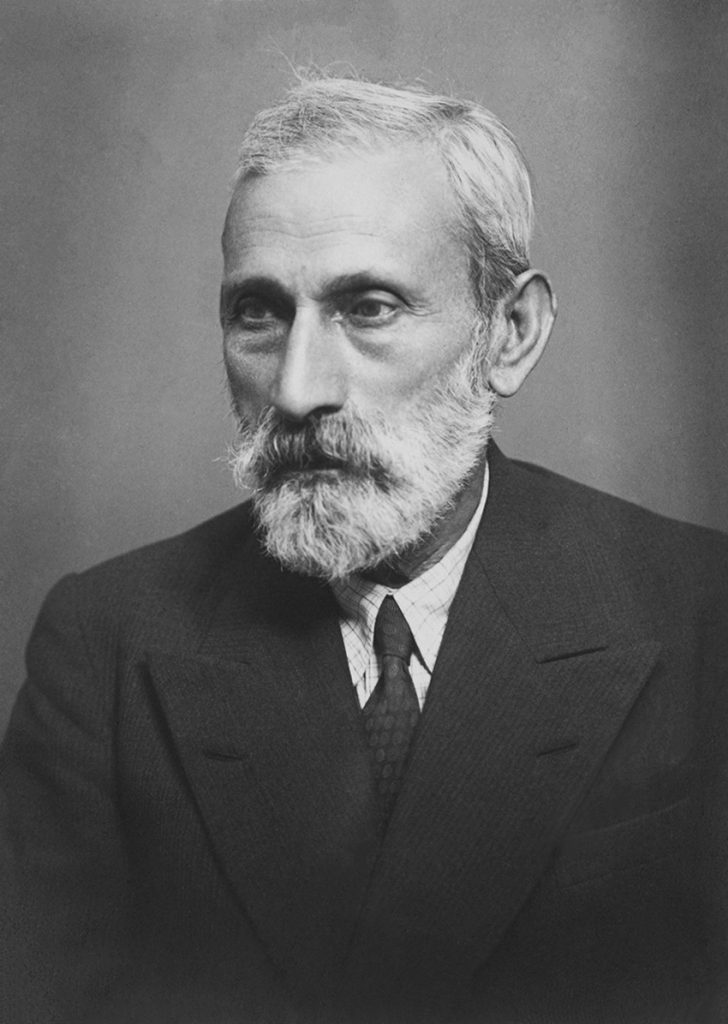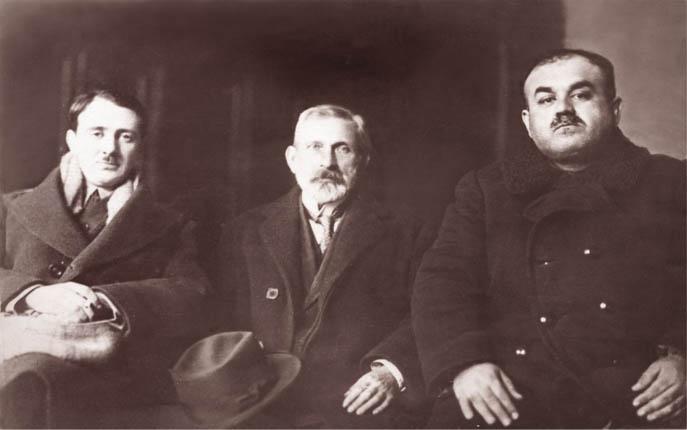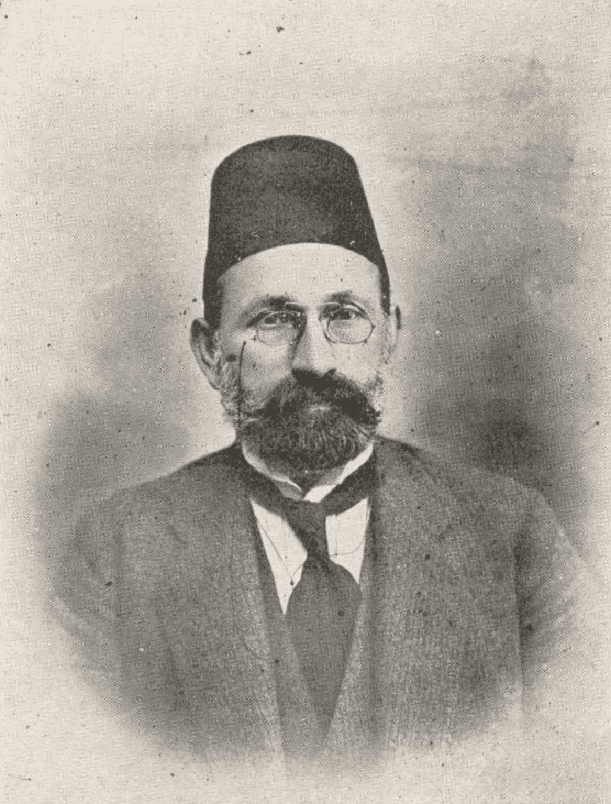
Ali bey Huseynzadeh (Ali Huseyn Turan), the writer, philosopher, literary critic and one of the most prominent representatives of the 20th century Azerbaijani-Turkish public trend was born on February 24, 1864. Having worked as a scientist, doctor, artist, poet, critic, translator, teacher and journalist, he left a specific trace in each of these fields. He had exclusive merits in the 20th century Azerbaijani press and publicism. In his early childhood Ali bey moved to Tiflis with his family and soon his father died. He was brought up by his grandfather Akhund Ahmad Salyani, who was the Sheikh ul-Islam (Supreme religious leader) of Caucasus at that time. He studied in Tiflis Gymnasium in 1875-1885, learned Turkish, Persian, Arabic, German and Russian languages during his childhood and student years.

From the archive of Ali bey Huseynzadeh
Ali bey Huseynzadeh benefited by the conversations of his grandfather Sheikh Ahmad with his friend Mirza Fatali Akhundzadeh (1812-1878), founder of Azerbaijan drama and public figure, thank to them became well aware of literary environment of his time.

The Monument of Ali bey Huseynzadeh
Having entered the department of mathematics of St. Petersburg University in 1885, Ali bey also listened to the lectures by prominent professors in the department of oriental studies. Taught by outstanding scientific figures of his time such as Dmitriy Mendeleyev, Yegor Vagner, Nikolay Menshutkin, Nikolay Beketov, Valentine Jukovsky and others, he gained an opportunity to get deeply informed of the political processes in the capital of empire. He was supporting national movement. For this reason he had to leave St. Petersburg as a number of revolutionist students did.

“Bibi Heybat Mosque” Painted by: Ali bey Huseynzadeh
The political agitations in the capital of Russian empire forced Ali bey Huseynzadeh to move to Istanbul, Turkiye and he studied in the military medical department of Istanbul University upon graduation of which he obtained the profession of dermatologist and military rank of captain. In 1897 he set off for Italy within the membership of Red Cross Society. Having returned back in 3 years, he was appointed professor assistant in the military medical department of Istanbul University. Ali bey Huseynzadeh was persecuted here, too, as he joined revolutionary movement of young turks and was one of the founders of Ittihad and Taraqqi (Union and Progress).
Ziya Gokalp, the outstanding public figure (1876 – 1924) wrote about how Ali bey Huseynzadeh, who had come from Russia to Istanbul, explained the essences of Panturkism and called his poem “Turan” the first echo of Pan-turkism ideology. The slogan “Turkicization, Islamicization and Europeanization” moved forward by Ali bey Huseynzadeh in 1905, in Tiflis gathered its intense adherents around in 1911. Ziya Gokalp published his articles under the title of “Turkicization, Islamicization and Europeanization” and book of these articles in 1918. But the name of Ali Suavi is not mentioned in the article of Ali bey Huseynzadeh and the name of Huseynzadeh is also absent in this last book. Nevertheless Gokalp appreciated Ali bey Huseynzadeh and called him Yalavach, which means “prophet, predictor or herald”.
The ideological values of Azerbaijani citizen which symbolized by three colours (blue, red and green) in the state banner of Azerbaijan Democratic Republic are connected with that these of Ali bey Huseynzadeh and historical merits of Fuyuzat adherents.

The cover of “Fuyuzat” magazine
32 issues of the public magazine “Fyuuzat” were published in one year.The word “Fyuuzat” is an Arabic word, meaning to hear, to understand, to enjoy the facts of life, to be happy.The first issue of “Fyuuzat” magazine was published on November 1, 1906. The sponsor of the magazine was the enlightened, millionaire patron Haji Zeynalabdin Taghiyev. In the pages of the magazine, together with its editor-in-chief Ali Bey Huseynzade, Muhammad Hadi, Mirza Alakbar Sabir, Huseyn Javid, Said Salmasi, Abdulla Shaiq, Ahmed Kamal, Ahmed Raiq and other authors published articles on various topics.
At the beginning of the 20th century, national press models played an important role in the organization and regulation of social and political opinion, and in the formation of the information environment. The transformation of journalism into a tribune of public opinion is also a product of that historical stage. “Fyuuzat” magazine and the services of its editorial staff are noteworthy in this sense. Because they did not limit themselves to publishing only one example of a magazine, they left their signatures on the pages of history by creating the line-movement of fuyuzatism, the “Fyuuzat” school of journalism.In addition to the Fuyuzat school of journalism, “Fyuuzat” magazine played an important role in creating the idea of independent statehood and constitutional free civil society in Azerbaijan.Azerbaijani readers received relatively detailed and accurate information about prominent figures such as Tolstoy, Goethe, Rousseau, and Montesquieu from the articles and translations published in this magazine for the first time. The “Fyuuzat” magazine headed by A. Huseynzade and the literary trend of the same name rendered serious services in the development of Azerbaijani literature and culture at the beginning of our century. There was a serious difference of opinion between “Fyuuzat” and “Molla Nasreddin” literary schools headed by Jalil Mammadguluzadeh in their attitude to different literary and social problems, especially in the language issue. However, fuyuzatists also performed extensive activities in the field of educating the people, instilling in them an open attitude to their history and contemporary situation, and spreading culture and science.
Ali bey Huseynzadeh also studied at Petersburg Emperor Academy of Arts. He is the author of a number of portraits and landscapes. His paintings are preserved in the museums of Baku and in personal collections in Istanbul and Paris. He is the author of first political claim written on behalf of Caucasus Muslims and tirade of “Turkicization, Islamicization and Europeanization”, the founder of Panturkism ideology, the founder of machine painting in Azerbaijan arts, the editor-in chief of Hayat newspaper and Fuyuzat magazine, as well as author of first “Encyclopedic Medical Dictionary” in Turkiye. Being the medical professor of Istanbul University, Ali bey Huseynzadeh is the first translator of “The Tale of Trojan Fairy” from “Illiad” by Homer, “The Story of Aeneas at Last Night of Troy” from “Aeneid” by Virgil, “Prometheus Bound” by Aeschylus from Greek, “Faust” by Goethe from German, “Paradise Lost” by Milton from English, rubais by Khayyam from Persian, “Wealth of Nations” by Adam Smith from French into Turkish, one of the founders of Ittihad and Taraqqi Jamiyyeti (“Community of Union and Progress”), Turk Ojaqlari (“Lands of Turks”), Turan Heyati (“People of Turan”) and finally, the principal of Seadet school in Baku. All these are the undeniable merits of Ali bey Huseynzadeh. Ali bey Huseynzadeh, a great figure of enlightenment died in 1940 in Istanbul.
The Ministry of Culture and Tourism, Azerbaijan Republic


